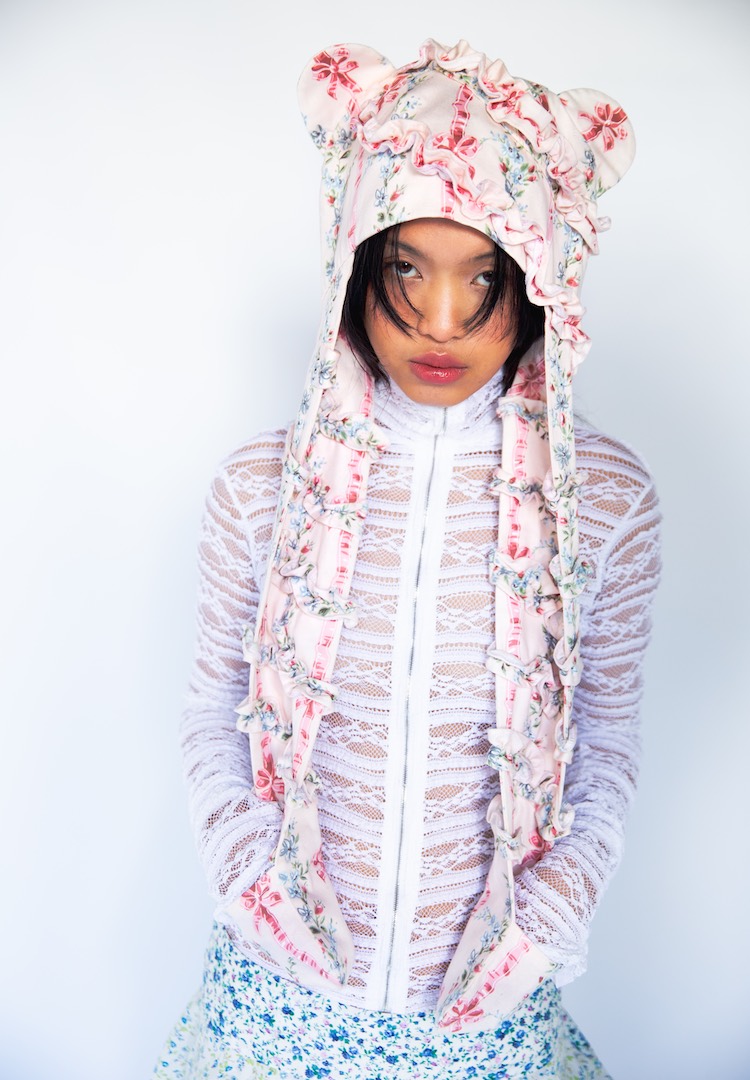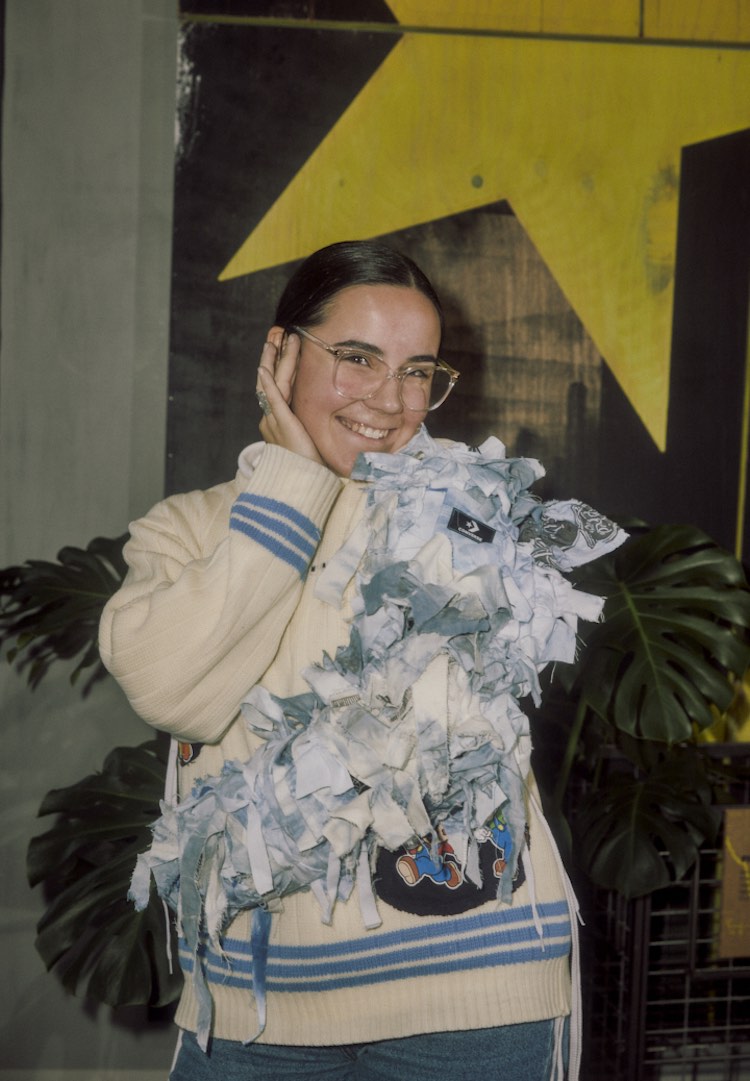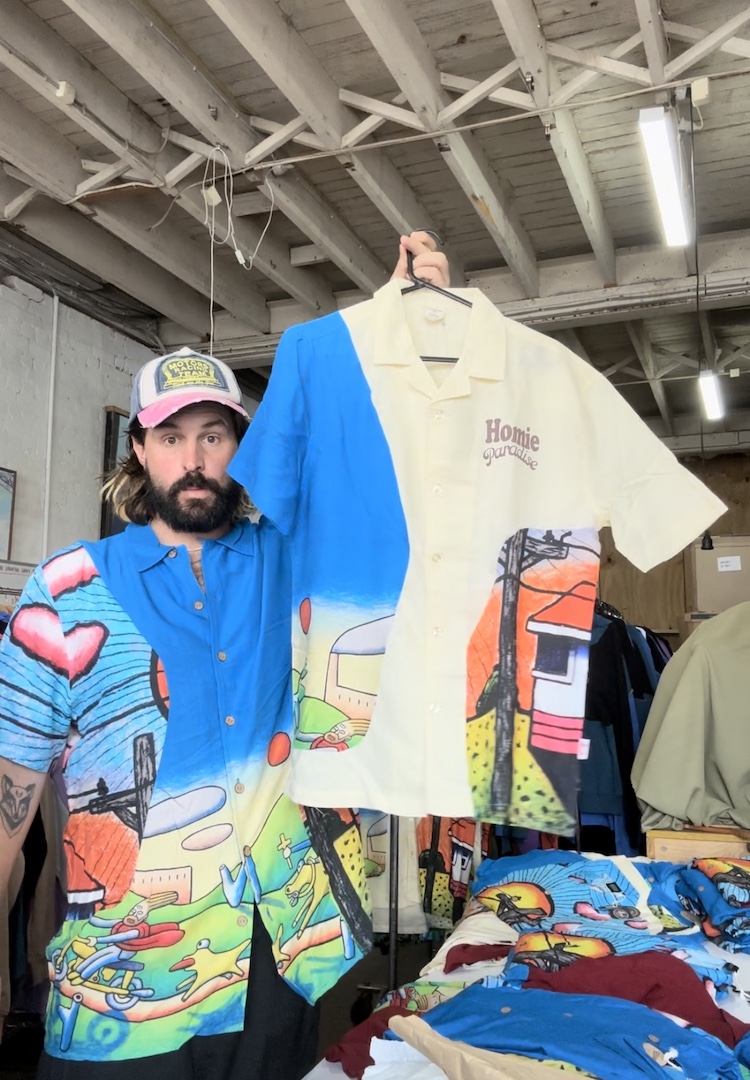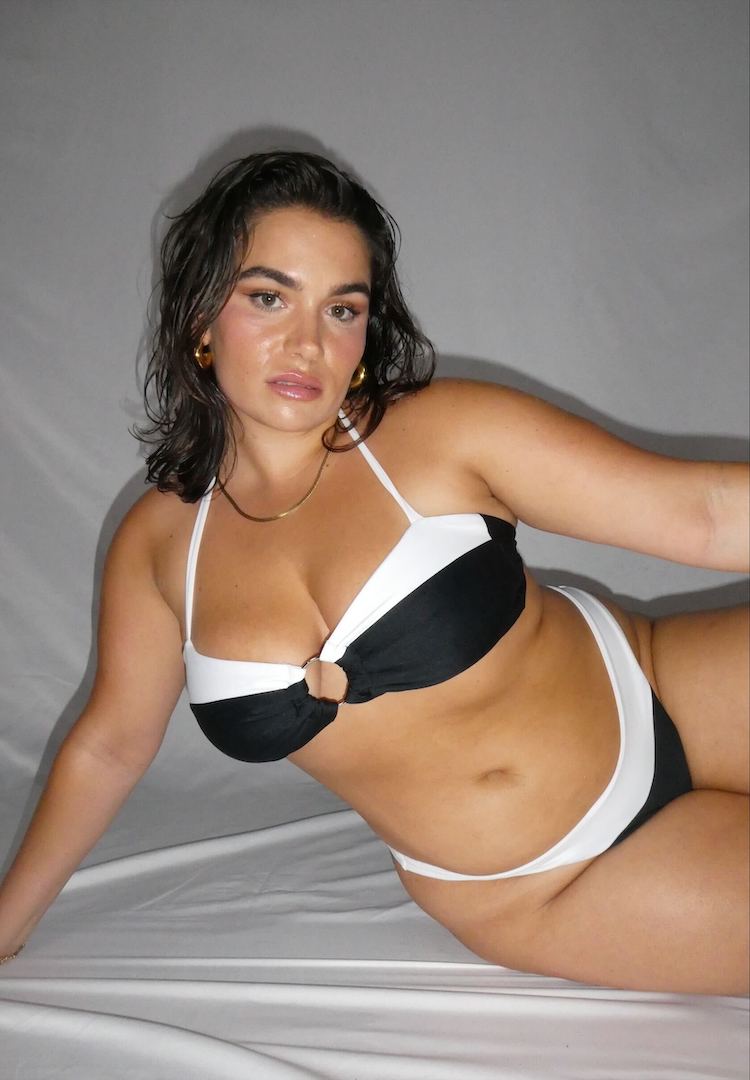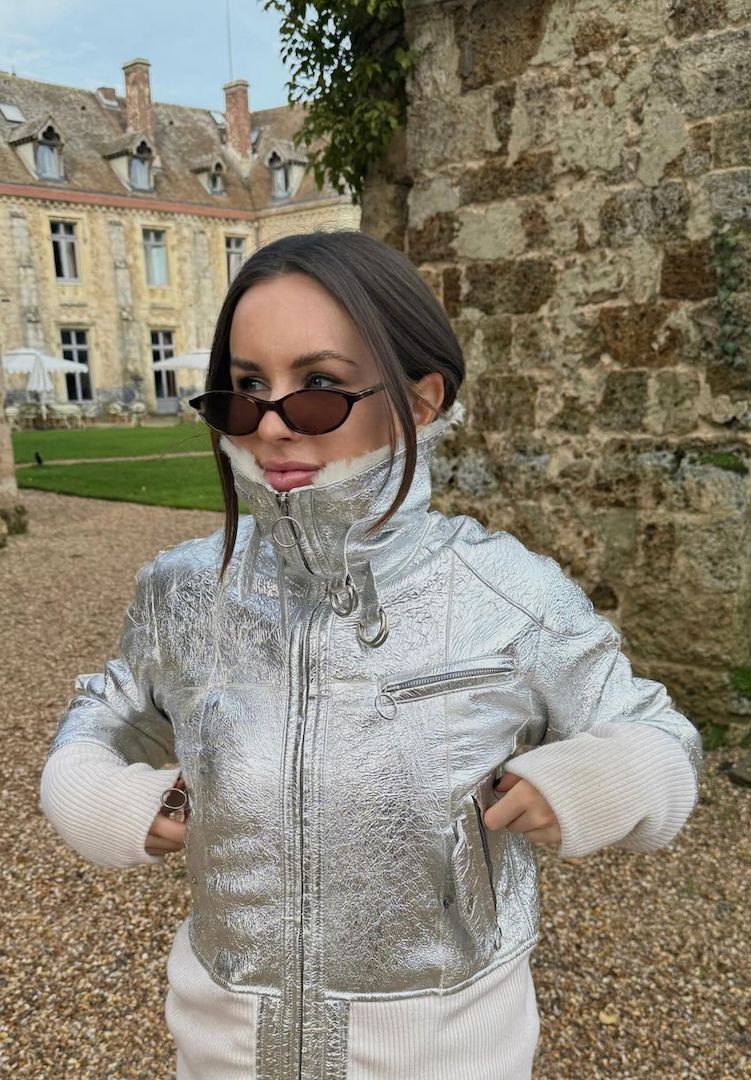A designer shares how to upcycle your wardrobe at home
IN PARTNERSHIP WITH CONVERSE
PHOTOGRAPHY BY CHARLIE HAWKS
WORDS BY SIENNA BARTON
“Upcycling your wardrobe doesn’t necessarily require cutting, mending or sewing if the garments that you own are in prime condition.”
Paulina Zamorano is truly one of the warmest people I’ve ever met, and I only spoke with her for an hour on Zoom. At only 23 years old, Paulina is a force to be reckoned with. After recently graduating with an undergraduate degree in visual art and graphic design, she’s now studying fashion design and spends her spare time volunteering for a not-for-profit arts organisation, Connection Arts Space.
She’s a true creative talent, which is maybe why two years ago, she was asked to join the Converse All Stars.
Looking for more ways to procrastinate? We’re with you. Come on over to our Fashion section.
First pioneered here in Australia, the All Stars program scouts young creatives at a grassroots level. Converse makes it a priority to nurture this young talent by leveraging its own global network to offer pretty special opportunities. Take, for example, the All Stars purpose-built fashion week show, or the time it offered All Stars the opportunity to mine the creative mind of the late Virgil Abloh.
For its most recent All Stars initiative, Converse commissioned Paulina to create a custom work over four days in the brand’s Renew Labs Fitzroy concept space – a completely new jacket using scrap fabric, pre-owned items and recycled materials. The project, which she worked on in collaboration with fellow All Stars Tori Talaina and Aysha Nanai-Leifi, is a mammoth effort, showing that you can create something beautiful from essentially nothing.
It was a fitting project for the location. Renew Labs is basically the antithesis of a store, designed to help customers prolong the life of their well-loved shoes and apparel, rather than buying something new.
Despite all her success, Paulina is endearingly humble and practical, which seems to mirror her attitude toward clothing. She believes in acquiring things she knows are timeless, taking care of them so that they last, and when they finally wear out completely, she gives the fabric a final life as something utilitarian (like stuffing for a cushion).
During our chat, Paulina shared some of her tips on getting the most out of your wardrobe, which I’ve compiled for you below.
Use natural dyes to hide stains or to breathe new life into dull fabric
Honestly, I don’t really care if I get stains on my clothes, I still wear them anyway but dyeing your clothes is a great option to help conceal any stains. When people get harsh stains on their clothes that can’t be removed using soap and water, they often choose to use bleach but I prefer to use natural dyes. Bleach has a highly detrimental impact on the environment, whereas natural dye repurposes things that might end up in your compost bin, like vegetable skins and avocado pits.
Embroidery and appliqué are great for mending holes or hiding stains
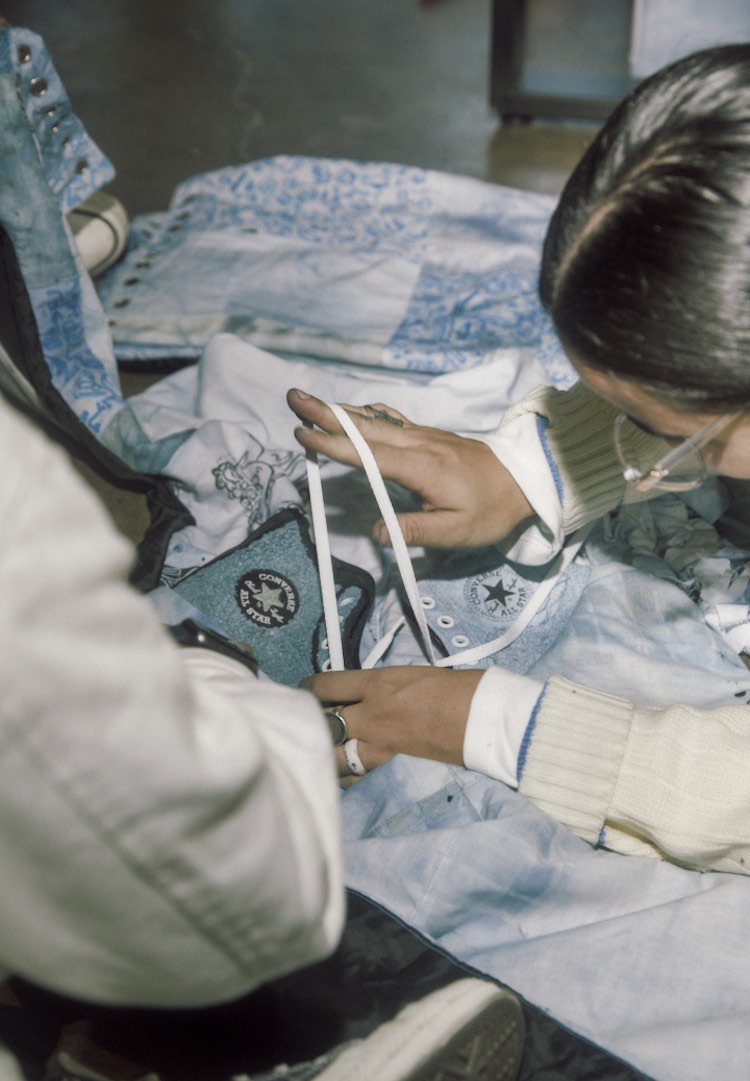
If you’ve got a stain or a hole, another route is to embroider the affected area using thread. By adding a deliberately decorative element to clothes you might have considered throwing out, you’re actually highlighting that fault and making it beautiful again. If you’re wanting to cover a bigger surface area, appliqué might be the way to go.
This technique involves decorating clothing using other pieces of fabric to form pictures or patterns. There’s a beautiful Japanese technique called ‘boro’ which uses a repeated running stitch to attach one piece of fabric to another. It doesn’t require too much knowledge about hand sewing, as it only requires a simple running stitch.
Don’t be afraid to use scissors to rework a garment

Depending on where the hole or stain is, the item might be able to be reworked entirely. For example, I know a lot of us get holes in our T-shirts where the fabric rubs against our pants buttons – why not cut into that T-shirt and make it into a crop top? Maybe it’s on the sleeve and you want to turn your plain old tee into an asymmetric top?
If you’re wanting to get serious about reworking your clothes, a sewing machine makes it a lot easier
I learned to sew by watching my mum and grandma mend and alter clothes for my other family members. It makes things much quicker, and because it’s a machine, it means that it can do some of the more heavy-duty work that my hands can’t. The sewing machine I use belongs to my mum, but I take care of it as though it’s my own. It’s my pride and joy!
Good quality, sharp scissors are an absolute must
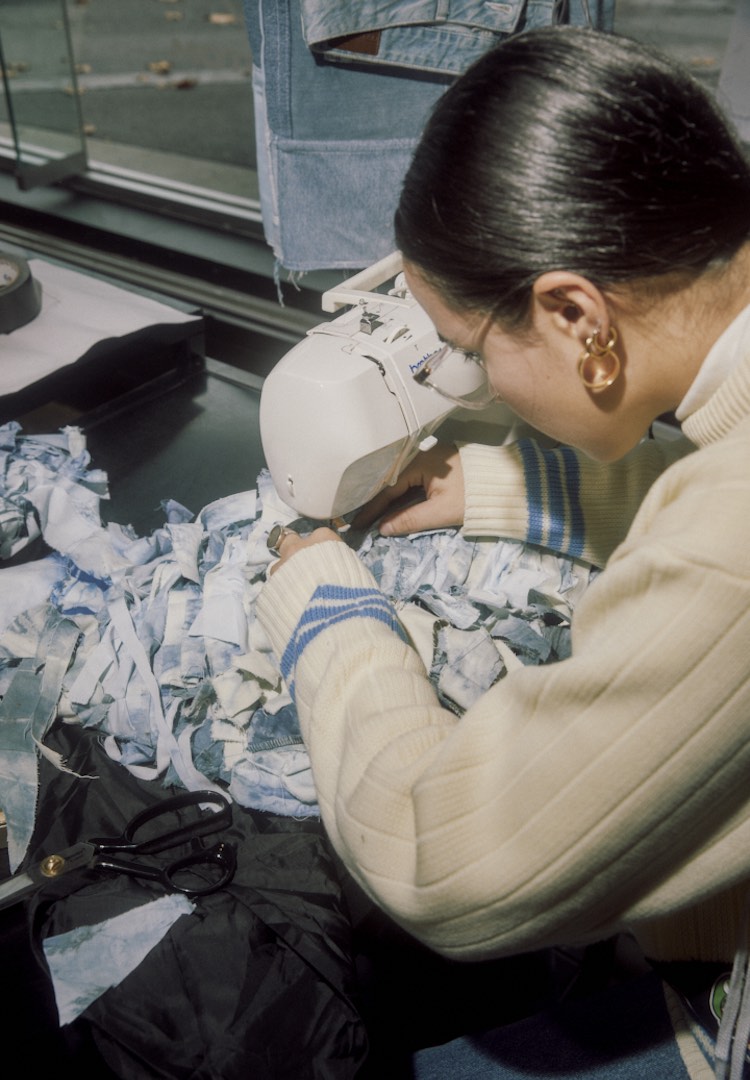
Other than my sewing machine, my scissors are probably the most used item in my upcycling tool kit. The same way that I invest in good quality clothing items that I know will last, I make sure I have scissors that are going to be with me for the long haul.
Look to your local op shop for inspiration
Another great way to learn how to sew is by purchasing simple clothing patterns at secondhand stores. If you’re reworking a garment or adding a completely new element to an existing piece, knowing about the construction of the garment is really important. These preloved, secondhand clothing patterns can teach you how to cut and sew a garment from scratch, giving you the tools to rework your old pieces in a fresh, unique way.
If there’s nothing else that can be done with your clothes, consider turning them into household rags or stuffing for a DIY project

I try to hold onto my clothes for as long as I can, but sometimes they just don’t hold up anymore. When this happens, I cut up the remnants and turn them into household rags. When I do this, I always make sure I finish the edges with an overlocker so they don’t fray all over the place, keeping them truly functional. Once the rags are done, any small, tattered bits of fabric works great as cushion stuffing or twisted into T-shirt yarn.
Anything else?
Finally, upcycling your wardrobe doesn’t necessarily require cutting, mending or sewing if the garments that you own are in prime condition. If you’re just stuck with a silhouette you don’t enjoy, don’t limit yourself to how it’s meant to be worn.
Button up two different shirts together using their respective buttons and buttonholes, create a dress out of scarves, tie them together and adjust the fabric to your body. Make your wardrobe fit you, not you to it. Think of how to love your garments again before you do a closet cleanout.

